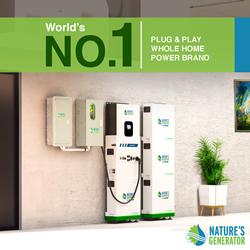Small Power, Big Grid: Part 1
New solar panel integrates battery storage, inverter, and smart software into a single unit
The Future of Bio-Inspired Batteries
Tesla Wins Large Contract with Utility for Energy Storage
SunPower Embraces Drones and Robots to Help Evolve Its Solar Farms
New technology puts solar power to work all night long
Alternative Energy Project Financing
Special News Report for Solar Power International 2016
Batteries Get a Boost From California Utilities
Making waves: Shetland tidal power breakthrough is another world first for Scotland
Energy Storage North America Announces Innovation Award Finalists
Could A Lithium Shortage De-Rail The Electric Car Boom?
'Ideal' energy storage material for electric vehicles developed
US Energy Dept says "holy grail" of clean energy storage is imminent
AltEnergyMag.com - Special Tradeshow Coverage of Solar Power International 2016
Records 796 to 810 of 1002
First | Previous | Next | Last
Energy Storage - Featured Product

